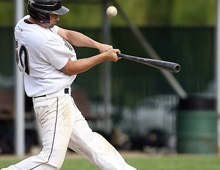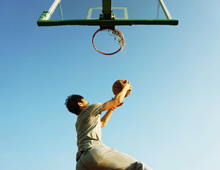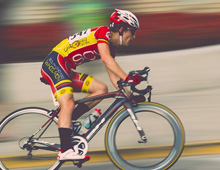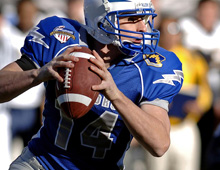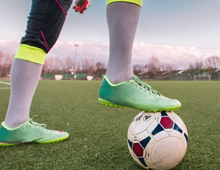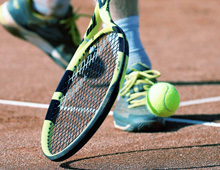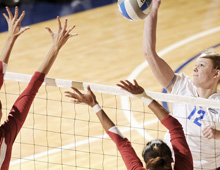Why Do Athletes Wear Sleeves on One Arm? A Quick Guide

" Why Do Athletes Wear Sleeves on One Arm? A Quick Guide
Introduction: The Rise of SingleArm Sleeves in Sports Culture
1. 8 Key Reasons Athletes Choose SingleArm Sleeves
2. How One-Arm Sleeves Affect Performance in Different Sports
3. Practical vs. Performance-Driven Choices
4. The Business Opportunity: Customizing Arm Sleeves for Brands
5. Purchasing the Right One-Arm Sleeve: Key Considerations
6. Conclusion: The Future of Arm Sleeves in Athletics
7. FAQs
Q1. Can I Order Small Quantities of Custom Arm Sleeves?
Q2. Are hypoallergenic fabrics available?
Q3. What Customization Options Are Available for Arm Sleeves?
Q4. Do Custom Arm Sleeves Offer UV Protection?
Q5. Can I Order Custom Arm Sleeves with a Specific Fit for Different Sports?
Q6. How Long Does It Take to Produce Custom Arm Sleeves?
What’s the deal with athletes sporting sleeves on just one arm? It’s more than a passing trend—it’s a statement, a strategy, and in many cases, a game-changer. From LeBron James to tennis legends, single-arm sleeves have gone from being a mere style choice to an essential piece of performance gear. But how did this quirky fashion statement evolve into an athletic must-have?
This quick guide dives into the origins, the evolution, and the reasons athletes swear by the one-arm sleeve. Was it just a trend sparked by iconic players like Allen Iverson? Or is there something deeper to this unique gear? With media magnifying its style and utility, it’s clear: these sleeves are more than just eye-catching. Whether it’s improving performance, aiding recovery, or offering psychological benefits, the one-arm sleeve has made its mark in sports culture. Ready to uncover why this accessory is here to stay?
1. 8 Key Reasons Athletes Choose Single-Arm Sleeves
Enhancing Sports Performance: Boosting Circulation & Reducing Injury Risk
Compression sleeves work wonders in improving athletic performance by promoting blood flow, ensuring muscles receive the oxygen and nutrients they need for maximum efficiency. For athletes in dynamic sports like basketball and tennis, optimal circulation ensures that muscles stay fueled and ready to perform, decreasing the risk of fatigue and injury during intense activity.
Accelerating Recovery: Supporting Muscle Repair & Reducing Soreness
Post-workout recovery is essential for maintaining peak performance. Compression sleeves help speed up the delivery of nutrients and oxygen to fatigued muscles, while also facilitating the removal of waste products like lactic acid. This process reduces muscle soreness and promotes quicker recovery, making them an invaluable asset for athletes, particularly those engaged in long-distance running or high-intensity training.
Providing Muscle & Joint Support: Stability and Pain Relief
Compression sleeves offer critical support to muscles and joints, especially for athletes dealing with injuries like calf strains or elbow discomfort. By stabilizing the affected areas and reducing the impact of micro-vibrations, these sleeves help alleviate pain, promote healing, and minimize the chances of further strain during activity.
Minimizing Injury Risk: Protection Against Vibration & Shock
High-impact sports put considerable strain on muscles and joints, often leading to injuries. Compression sleeves help absorb shock and reduce the harmful effects of vibrations on the body. For athletes in sports like running, basketball, and football, they act as a protective barrier, safeguarding the body’s most vulnerable areas, including calves and knees.
Temperature Regulation: Staying Comfortable in Changing Conditions
Maintaining the right body temperature is crucial for athletes. Compression sleeves help regulate the temperature of covered areas, ensuring comfort regardless of the weather. During cooler temperatures, the sleeves provide warmth, while in warmer conditions, they help cool the body down. This versatility allows athletes to adapt to shifting climates without compromising their performance.
Moisture Control: Keeping Dry for Better Comfort
Compression sleeves are designed with moisture-wicking fabrics that draw sweat away from the skin, keeping arms dry and comfortable during intense activity. This feature is particularly important in hot or humid conditions, where staying dry can help athletes avoid discomfort, chafing, and distractions while they focus on their performance.
Stabilizing Joints: Supporting Elbows, Knees, and Calves
Athletes often face the challenge of joint stability, especially in sports that involve repetitive movements or heavy impacts. Compression sleeves help protect vulnerable joints like elbows, knees, and calves by providing added support and reducing the risk of injury. They are especially beneficial for athletes in tennis, golf, and other sports that demand joint protection.
Personal Style & Aesthetic Appeal: Expressing Identity through Sleeves
Compression sleeves are no longer just about performance—they’re also a way for athletes to express their individuality. Whether it’s adding bold colors, team logos, or unique designs, athletes use these accessories to create a signature look. From the track and field stars to professional basketball players, the sleeve has become an integral part of an athlete’s personal style, making them stand out both on and off the field.

2. How One-Arm Sleeves Affect Performance in Different Sports
Football Quarterbacks: Shielding Against Abrasions and Impacts
Football quarterbacks are constantly subjected to abrasions and collisions. A single-arm sleeve adds an extra layer of protection, shielding the arm from scrapes and physical impacts while offering muscle support. This layer also helps reduce vibrations that can cause discomfort, allowing quarterbacks to maintain focus and perform at their highest level throughout the game.
Tennis Players: Combating Repetitive Strain and Sun Exposure
Tennis players frequently deal with repetitive strain, particularly in the elbow and forearm. Compression sleeves alleviate this strain and help prevent injuries like tennis elbow. Additionally, they offer protection from prolonged sun exposure, reducing the risk of skin damage during extended outdoor matches. This makes compression sleeves both a functional and protective tool for athletes on the court.
Running: Calf Sleeves for Injury Prevention and Sun Protection
Runners often rely on calf sleeves to improve performance and protect the lower legs. These sleeves provide compression to prevent calf injuries, supporting the muscles during long runs. They also protect against sunburn and abrasions, ensuring athletes stay comfortable throughout their training or races. Additionally, arm compression sleeves help stabilize the elbow joints, regulate body temperature, and assist with muscle recovery, enhancing the runner’s overall experience by addressing both performance and recovery needs.

Basketball: Balancing Arm Mobility and Protection
In basketball, both agility and protection are essential. One-arm sleeves are ideal for athletes in this high-intensity sport, offering compression that alleviates muscle fatigue while maintaining flexibility. These sleeves help prevent strain from the continuous motions of jumping, dribbling, and physical contact, while minimizing injury risks. Players in basketball and football rely on compression sleeves for critical support, stabilizing key muscles and joints to reduce the likelihood of injury. Professionals in leagues like the NBA and NFL often use them to shield vulnerable areas, improving both performance and endurance throughout the game.
Baseball Pitchers: Reducing Stress on the Throwing Arm
Baseball pitchers endure significant stress on their throwing arm with each pitch. Compression sleeves provide vital support by stabilizing the muscles and joints, particularly around the elbow and shoulder. Additionally, these sleeves enhance blood flow, speeding up recovery and maintaining the arm's readiness for long seasons of intense play, ensuring pitchers stay in top form.
Golf/Tennis Elbow Relief: Stabilizing Joints in High-Vibration Sports
Sports like tennis and golf can lead to joint discomfort, including tennis and golfer's elbow, due to repetitive motions. Compression sleeves stabilize the elbow joint, reducing the strain caused by vibrations and the repetitive actions of swinging. These sleeves provide joint relief and help prevent injuries while promoting healing, ensuring long-term joint stability for athletes.
Endurance Sports: Balancing Recovery and Performance
In endurance sports, athletes such as marathon runners, cyclists, and triathletes put immense strain on their muscles over extended periods. One-arm sleeves provide crucial support, helping to balance performance with recovery. These sleeves help maintain muscle function during long events, while also aiding in quicker recovery during breaks, reducing fatigue and ensuring athletes perform at their peak throughout the entire competition.
3. Practical vs. Performance-Driven Choices
When Athletes Need a Sleeve vs. When They Want One
Athletes may choose to wear a sleeve based on practical necessity or personal preference. Some need the sleeve for injury prevention, muscle stabilization, or recovery, especially in sports involving high-impact movements or repetitive stress. In contrast, others might choose the sleeve for aesthetic reasons or to boost performance, even without a specific need for physical support. Whether for practical benefits or a mental boost, these garments serve various purposes depending on the athlete's goals.
The Debate Over Aesthetics vs. Functionality
A common debate in the sports apparel world is whether athletes prioritize aesthetics over functionality or vice versa. Compression sleeves offer notable performance advantages like improved circulation and muscle stabilization. However, many athletes also embrace them as a style choice, using sleeves to express personal or team identity. For many, both aspects work in harmony—athletes enjoy the functional benefits while also appreciating the fashion statement these sleeves allow them to make. The balance between performance and appearance often depends on individual preferences.
Case Studies: Athletes Who Swear by Single-Arm Sleeves
Numerous elite athletes incorporate single-arm sleeves into their routines for both physical and psychological benefits. For instance, NBA players frequently wear these sleeves to enhance blood circulation and reduce injury risks during high-intensity games. In tennis, players like Rafael Nadal use sleeves not only to combat muscle fatigue but also as part of their signature on-court look. These examples underscore how athletes across different sports find value in wearing sleeves, whether for recovery, performance enhancement, or personal expression.
One Arm vs. Two: Addressing Unilateral Injury and Dominant Limb Needs
The choice between one-arm and two-arm sleeves often depends on the athlete’s specific needs. Athletes with unilateral injuries, like an elbow strain or shoulder discomfort, may opt for a single sleeve to target the affected area. Alternatively, athletes who experience overall muscle fatigue or require full-body support might prefer wearing sleeves on both arms. The decision can also stem from the dominant arm's higher workload; some athletes choose to protect the arm that bears more strain during their activities, ensuring it stays supported for optimal performance.

4. The Business Opportunity: Customizing Arm Sleeves for Brands
Why Brands Should Consider Custom Arm Sleeves for Their Athletes
Custom sleeves present a valuable opportunity for brands to not only support athletes in their performance but also create greater brand visibility. These products offer functional benefits, such as enhanced circulation and injury prevention, while simultaneously promoting the brand through unique, visible designs. Custom sleeves help brands connect with athletes by providing a high-performance product that also represents their brand identity, making them an appealing option for sportswear lines.
Key Features That Customers Look for in High-Quality Arm Sleeves
When choosing arm sleeves, athletes and brands prioritize several essential qualities. The fabric should be breathable and moisture-wicking to keep the athlete dry and comfortable during high-intensity activities. Compression should be optimized to support muscles without restricting movement. Durability and UV protection are also key factors, as athletes need sleeves that can withstand rigorous use and provide protection from the sun. Meeting these expectations is crucial for brands offering high-quality performance gear.
Customization Options
Offering customized arm sleeves allows brands to stand out in the marketplace. The materials can be tailored to provide the right balance of comfort, flexibility, and performance. Designs can incorporate brand logos, colors, and other unique elements that represent a brand’s identity. Offering various sizes ensures a perfect fit for athletes of different body types, helping to create a personalized experience. These customization options allow brands to attract customers who value both function and style.
Production and Logistics
Collaborating with an experienced manufacturer can significantly streamline the production and distribution of custom sleeves. A reliable supplier ensures that high-quality materials are used and that production runs smoothly, from prototype creation to final bulk orders. Additionally, partnering with a trusted manufacturer can simplify logistics, including managing inventory, ensuring timely deliveries, and facilitating global distribution. This enables brands to focus on expanding their presence in the market while having confidence in the efficiency and quality of their product's production process.
5. Purchasing the Right One-Arm Sleeve: Key Considerations
Size
Ensuring a Comfortable Yet Supportive Fit
When selecting an arm sleeve, it's important to find one that offers a snug fit to gently support muscles without restricting blood circulation or causing discomfort. The sleeve should offer the right level of compression to enhance performance while maintaining flexibility. To ensure the best fit, always refer to the sizing chart and take accurate measurements of the arm to avoid any issues with fit.
Compression Level
Arm sleeves are available in various compression levels designed for different needs. For everyday use or general muscle support, a medium compression level, usually between 20-30 mmHg, is suitable. However, for specific purposes, like injury recovery or higher-intensity activities, a stronger compression level may be needed. In such cases, it’s recommended to consult with a medical professional to choose the appropriate pressure.
Fabric
Opting for Moisture-Wicking, Flexible Materials
The fabric of the sleeve plays a crucial role in comfort. Look for materials that are breathable and moisture-wicking, such as nylon-spandex blends. These fabrics offer flexibility and a body-hugging fit while keeping the skin dry by efficiently drawing sweat away. This helps prevent overheating and keeps athletes comfortable during high-intensity activities.
Durability
Choosing Long-Lasting Materials for Frequent Use
Since arm sleeves are subjected to frequent use, durability is key. Look for reinforced stitching and high-quality, resilient fabrics that can withstand intense activity. Durable materials ensure that the sleeve maintains its compression and support even after repeated use and washing, offering long-lasting performance and value.
6. Conclusion: The Future of Arm Sleeves in Athletics
Arm sleeves are becoming an essential part of athletic gear, offering both performance benefits and style. From enhancing circulation and muscle recovery to providing protection and supporting recovery, these sleeves have proven valuable across various sports. With advancements in materials and design, they’re set to become even more tailored to athletes’ needs. For brands, embracing this trend and offering high-quality, customizable options can help differentiate themselves in a competitive market. Ready to customize arm sleeves for your brand? Contact us today to get started!
7. FAQs
Can I Order Small Quantities of Custom Arm Sleeves?
While many manufacturers have minimum order quantities (MOQ), some offer flexibility depending on your needs. Generally, custom arm sleeves are available for bulk orders, but negotiating for smaller batches might be possible with larger quantities or a mix of designs.
Are hypoallergenic fabrics available?
Absolutely. Bamboo blends, or antimicrobial silver-infused options cater to sensitive skin or odor-prone athletes.
What Customization Options Are Available for Arm Sleeves?
Custom arm sleeves can be personalized with various options, including colors, logos, graphics, text, and packaging. You can choose the design to align with your brand’s identity or team colors, and some manufacturers also allow custom patterns and prints for a unique look.
Do Custom Arm Sleeves Offer UV Protection?
Yes, many custom arm sleeves are made from materials that provide UV protection. This is especially useful for athletes who spend long hours outdoors, as the sleeves can protect the skin from harmful sun exposure while providing performance benefits.
Can I Order Custom Arm Sleeves with a Specific Fit for Different Sports?
Absolutely. Custom arm sleeves can be designed with specific fits and features based on the demands of different sports. Whether you need extra joint support for tennis, added stability for basketball, or calf protection for running, the design can be tailored to enhance performance in a variety of athletic environments.
How Long Does It Take to Produce Custom Arm Sleeves?
Normally, it takes 1-2 days to create a ready sample. For customized samples, it usually takes around 7 days. Bulk orders typically take 20-25 days for production, depending on the complexity and volume.



